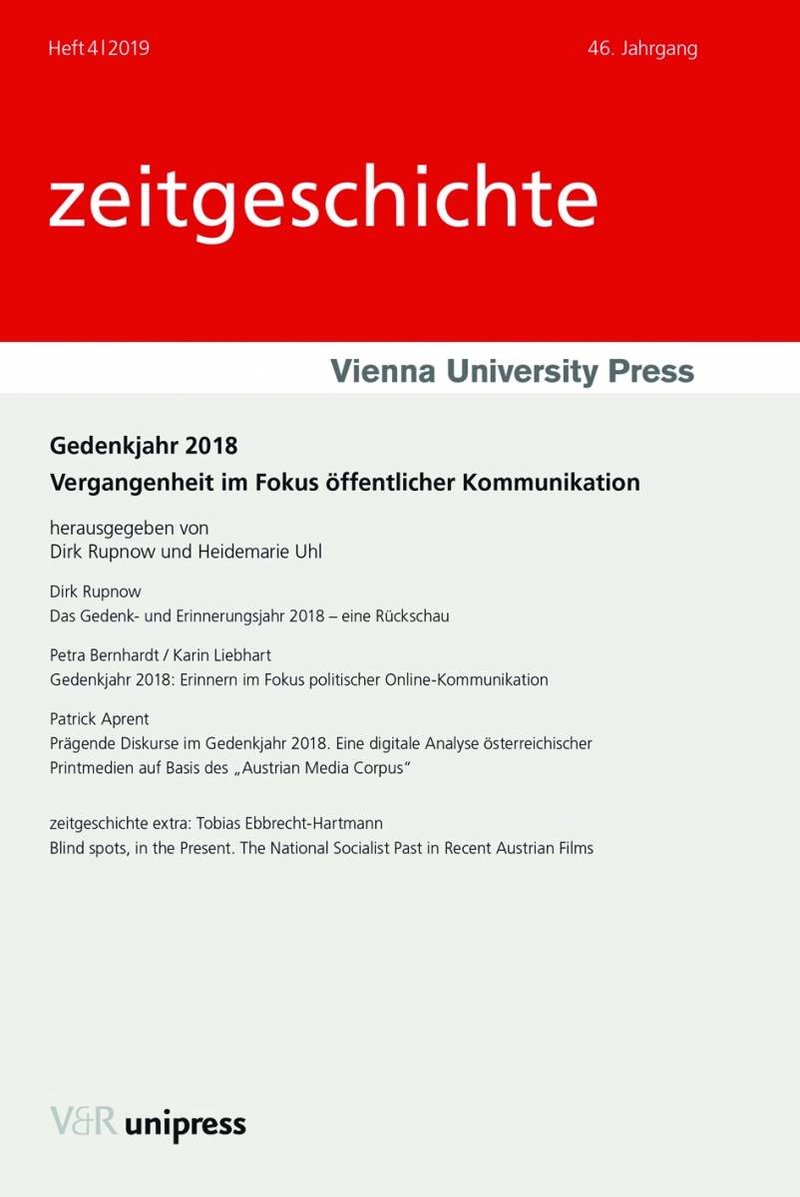Blind spots, in the Present. The National Socialist Past in Recent Austrian
In: Gedenkjahr 2018. Vergangenheit im Fokus öffentlicher Kommunikation. (Zeitgeschichte 46. Jg., Heft 4)
Vandenhoeck & Ruprecht
2019
9783847010098

Many recent Austrian films engaging with the country’s National Socialist past do not reconstruct wartime events. They rather focus on the present or on significant postwar events in order to indicate the aftereffects, continuing traces and persisting memories of the Holocaust. In doing so, documentary films such as Waldheims Walzer (The Waldheim Waltz) or dramatizations such as Murer – Anatomie eines Prozesses (Murer – Anatomy of a Trial) review the history of postwar ignorance and silence and utilize it as an allegory for critically analyzing contemporary political conditions, especially concerning the rise of populist right-wing politicians and parties. Autobiographical films such as You Only Die Twice (Der Mann, der zweimal starb) indicate a change in perspective, integrating Jewish-Israeli experiences into Austrian memory as well. The article analyzes these films in the context of recent shifts in Austria’s culture of commemoration and in relation to certain tendencies in Austrian cinema’s engagement with the National Socialist past.
Zum Band: 2018 wurde in Österreich ein „Supergedenkjahr“ mit zwei Brennpunkten begangen: 100 Jahre Gründung der Republik Österreich 1918 und 80 Jahre „Anschluss“ 1938. Die Ende 2017 geschlossene Koalition von ÖVP und FPÖ verlieh der Frage nach dem Umgang des offiziellen Österreich mit seiner Vergangenheit zusätzliche Brisanz. Die Beiträge geben einen Einblick in die Debatten und Kontroversen des Gedenkjahres 2018, darüber hinaus aber auch in die neuen methodischen Potentiale einer Verschränkung zeitgeschichtlicher Fragestellungen mit Verfahren der Digital Humanities.
